Ioannis E. Anastasakis
Lt.General (ret.) Regional Observatory on Security for Economic Development, Greece
Introduction
The Protection of Critical Energy Infrastructure of an organized society is essential for the normal life of the residents . For this reason, related companies and competent Authorities should be prepared for the prevention and immediate remedy of any problem created affecting such critical infrastructures. The problems, beyond normal wear and tear maintenance, may be caused either by natural disasters or by human intervention. Human interference can be caused by wrong or malicious act, such as a terrorist attack or sabotage. One of the major Critical Infrastructures in each country is the one of electric energy.
A case study on the protection of electric energy critical infrastructure, covering production and transmission networks, is “the case of Greece” .
Terminology
Before proceeding, it is important to clarify some relevant terms that are commonly used. These are the terms: Safety, Security and Protection.
The term Safety means: freedom from danger.
The term Security means: protection from danger (safeguard Safety)
The term Protection means: method or means of defending

Therefore, the Protection of Energy Critical Infrastructure (ECI) can be seen as: “The Means and Method used to establish Security measures, in order to safeguard the Safety of this Critical Infrastructure”. As “Means” should be considered, not only the technical Means (cameras, sensors etc) but also the Security Personnel (special trained and properly allocated).
As “Method” should be considered the Security Plan that is in force, for each one specific site and also the overall Plan for the protection of the entire network.
Electricity Critical Infrastructure
What should be protected in the case of Electricity Critical Infrastructure? In principle, the electricity production areas, the power transfer lines and the distribution points or substations for the electricity voltage change (downgrade) should all be protected. Each electric power production site, including relevant management centers, have a different degree of difficulty in order to be protected, such as that of a hydroelectric dam, a nuclear-power plant, a thermal power plant, renewable energy sites (solar or wind), and the transfer lines (mainly high voltage). To cope with this diversity, a different Method of Protection is needed in each case and of course other technical means of security, more suitable for the site and also different training of security personnel allocated in each site. The overall landscape of the area (e.g. remote, inhabitant or pedestrian), the size of installations, the accessibility, and other factors, play a key role in the planning of the site’s protection. The purpose of the Protection of Critical Electricity production and transfer facilities is that the electricity should be delivered, uninterrupted, to the users (consumers), whether for industrial or private household use. Therefore, P-ECI is essential priority for National Authorities and also for the investors in that field.
At EU level, by ensuring a high degree of protection of CEI and increasing their resilience (against all threats), the consequences of loss of services to society as a whole are minimized. These objectives feature predominately in the Stockholm Program of European Council in 10-11 Dec. 2009 and in the EU Internal Security Strategy .
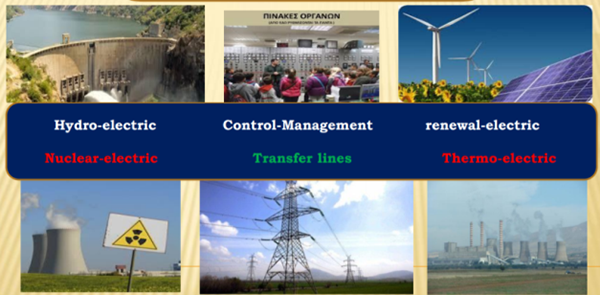
Figure 1: Electricity production & transfer
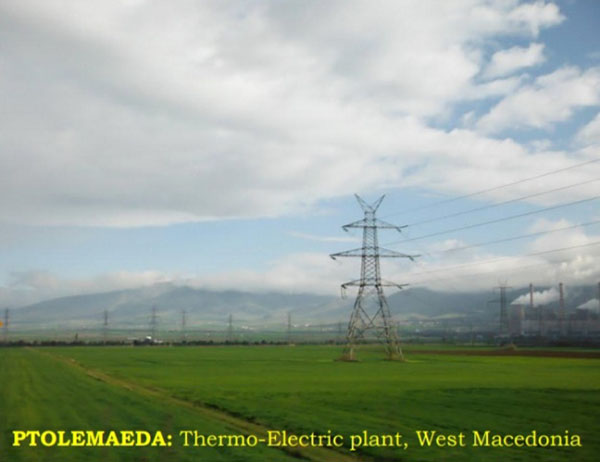
Figure 2: Site of production & transfer
In the “case of Greece”, an example of coexistence of an electricity production plant and the national high voltage grid is one of the four thermoelectric plants in the region of Ptolemaeda in Northern Greece / Western Macedonia area. The proximity of the plant with the dense high voltage transfer network, in a limited specific geographical area, creates special conditions and high requirements for protection of the whole local system.
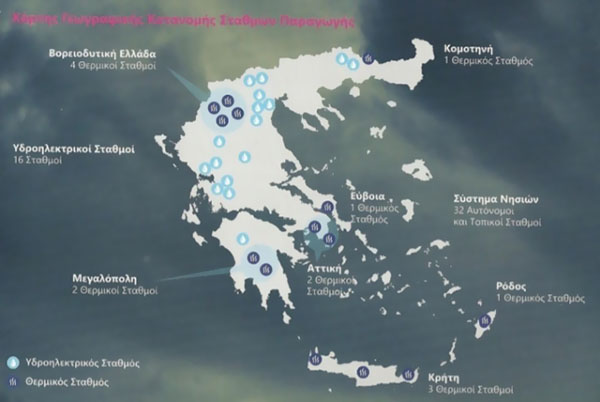
Figure 3: Main production sites
Concerning Greece, the power production sites, may be identified in two groups, the main and the secondary. Until today, the State owns the electricity company, has the exclusive rights to use Lignite reserves and the management of water resources for electric power generation .Concerning Lignite reserves (lignite = a kind of soft coal), Greece is the 2nd in the EU and 6th globally. Therefore, the use of lignite for electricity production gives great economic advantage, because it has been estimated that the Public Electricity Company, saves about one billion Euros per year in foreign currency for the supply of fuel. High concentration of lignite reserves exist in the Ptolemaeda region where there are four thermo-electric plants, in Megalopolis where there are two thermoelectric factories and in Aliveri area where there is one production plant.
Thermoelectric plants which use fuel other than coal, such as oil or gas, operate two in Attica region and three on the island of Crete.
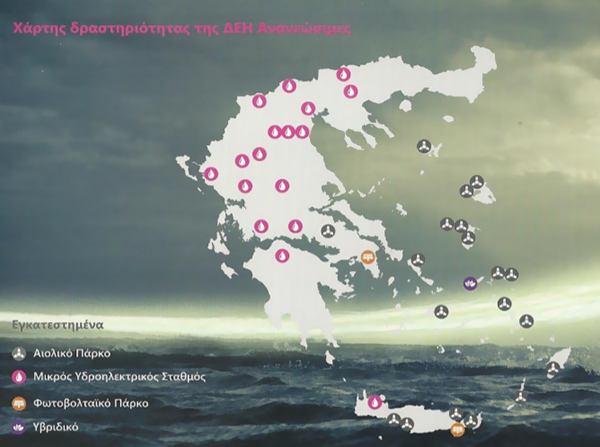
Figure 4: Secondary and Renewal sites
Regarding the use of river waters for electric power generation, there are numerous dams for the operation of hydroelectric power plants, namely on the rivers: Nestos, Axios, Acheloos, and Ladonas. The formation of numerous installations of electricity production and the wide transmission/transfer system that starts from there and transfer the electricity across the country, requires an extremely complex plan of Protection for these facilities. The fact that production facilities are scattered across the country and not concentrated in one place, as for example happens in a nuclear power plant, gives some flexibility in the selection of alternative production plants and accordingly routing of electricity to the national electricity transmission grid.
In 2016, an agreement for “Strategic Partnership” was signed between the Greek Public Electric Power Corporation known as PPC, with its nationally trade mark name ΔΕΗ(pronunciation=dei) and the China Machinery Engineering Corporation (CMEC), that is a construction and engineering company, forming one part of the China National Machinery Industry Corporation group of companies. The specialization of CMEC lies in construction of power projects in generation, transmission, and distribution.
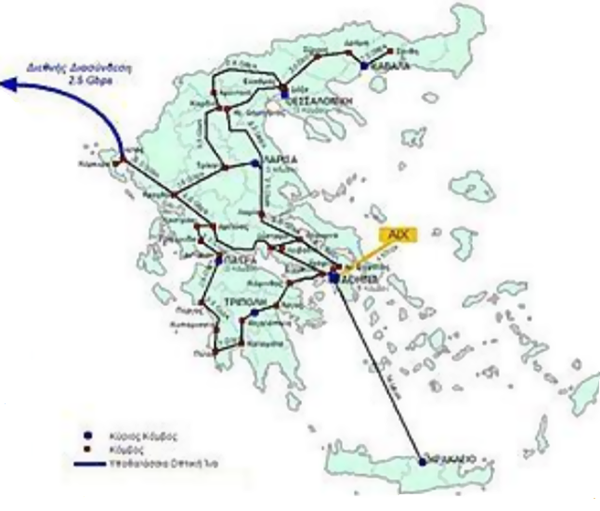
Figure 5: National electricity grid
The aim of the mentioned Strategic Partnership is initially to construct a new thermoelectric production plant close to the city of Florina, using new technologies of generators for high efficiency and low CO2 emissions, and also to expand to Turkey and to the Balkans, initially Albania, FYROM, Bulgaria and beyond.
In addition to the main electricity production network of thermoelectric and hydroelectric power plants, there is also a secondary production network, which may be considered as the 'clean energy' system, consisted of smaller dams, as well as renewable energy sources. Also locally operate public or private smaller thermoelectric plants which use gas as fuel. The wind energy to produce electricity, finds extensive application on the Aegean islands, in order to give them the necessary local autonomy and competence. This is not only a national but also a EU policy, which started during the EU Presidency of Cyprus and implemented by Malta’s EU Presidency.
In recent years, in implementation of EU policy concerning monopoly, the 10% of the electricity production supplied by individuals in Greece mainly comes from renewable energy sources, wind or solar parks, as well as small regional thermoelectric plants. In the next few years, the private production of electricity should be raised to 49% of total national electricity production. Therefore, a significant increase of the private investments in the electric energy sector is to be expected. The protection of all new electric power infrastructures will be also responsibility of the new investors.
For the transfer of electricity from the production sites to consumers, an extensive national high-voltage transmission network, known as the “national grid”, connecting the whole country, has been installed. This electricity network has been integrated with a data transmission network. Specifically, the upper wires to high-voltage power lines are optical fibers in order to carry data. The two (2) main applications of those data are, first to count consumers’ consumption and second to measure the renewable energy generation that joins the network directly from the production sites, solar or wind farms, which are scattering across the country. The management of the entire national grid is the responsibility of ΑΔΜΗΕ (pronunciation=admie), that means “Management Authority for Transfer of the Electric Energy”. This Authority was 100% public owned until 2016, when the Chinese company named “State Grid” acquired the 26% of the Greek company. Privatization of the Management Authority should continue, until private companies acquire (sharing) 49% of the national electricity transfer network. Therefore, in the electricity transfer section, a significant increase of the private investments in the near future should also be expected. The protection of the entire new electric power transfer network and the respective percentage of the older network, will be under the responsibility and funding by the new investors.
The national and cross border high voltage grid covers more than 12.200 Km lines. New HV lines were added to the network, almost by an average of 100 Km per year, until the year 2010. After this year, the economical restrains at the public domain, affected negatively the expansion of the lines, since the public owned company ΔΕΗ was the owner of the entire electricity grid by 100%.The public funds released during this period were hardly enough to maintain the existent grid, in order to keep it operational. It is expected that after the privatization of almost 49% of the network, taking under consideration that today it is 76%, while until 2016 was 100% public owned, new private funds will boost the extension nationally and cross border mainly to the Balkans.
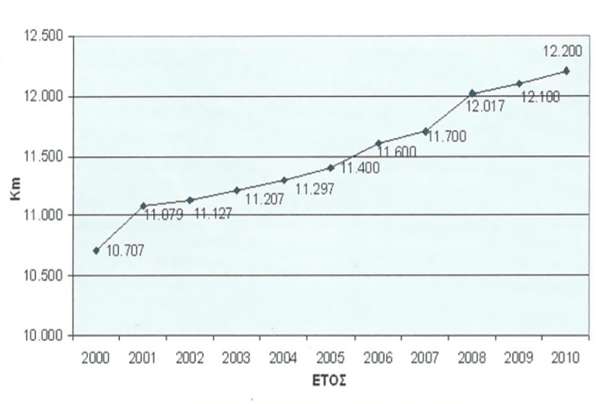
Figure 6: High voltage lines
The national Medium & low voltage lines cover more than 226.500 km . Until 2010 the grid was extended by an average of 4.000 km new lines per year. It is expected that after the privatization of almost 49% of the network(today 90% is public owned), new private funds will boost the network extension nationally.
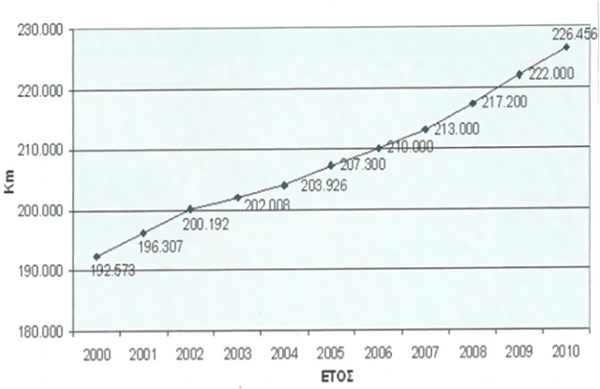
Figure 7: Mid. & lowvoltage lines
The Mid. & Low voltage lines controlled by ΔΕΔΔΗΕ (pronunciation: deddie) that means : Management of Greek Network of Electric Energy Distribution. Springboard for the development of the electric energy sector is the objectives set by EU, for the operation of power systems, aiming to drastically reduce greenhouse gas emissions and halt climate change. At the same time the security of energy supply is of paramount importance. Based on new energy technologies, and also information technology and telecommunications, the new projects under development, will radically alter the functioning of the electricity distribution networks. One of the key areas of great importance is the modernization of the Distribution Network Control Centers. This project will pose improvements to the Protection to those Energy Critical Infrastructures (ECI), namely the distribution networks.
During the big fires in Greece in the summer of 2007, there were rumors and some evidence, but not clear proofs, that it was sabotage or terrorist action. Remarkable was the fact that the fire destroyed an extensive national electricity grid, affecting four main production plants, namely: the thermoelectric at Aliveri, the hydroelectric on Ladonas river and two thermoelectric plants at Megalopolis area. As it is obvious on the satellite image, all fires started close to the main production plants. After this disaster, an enormous effort was required to restore damages, in an extensive part of the electric national grid.
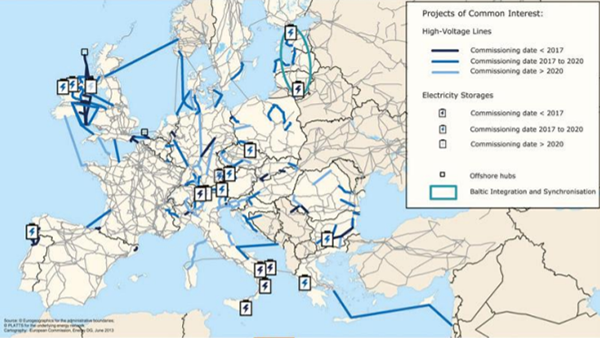
Figure 8: Submersible cables (HVDC lines)
The question that arises is if it was possible to prevent such a fire, having multiple starts in different places almost simultaneously, or even to control and coordinate operations in order to minimize the damages. The spontaneous answer is yes, there is space for improvements in “Means and Method” for Protection of this Critical Energy Infrastructure. Technical means, like thermo sensors dispersed over remote areas will give early warning for new fires. Real time IR Satellite images, and drones, will also provide valuable information to the “Disaster Management Centers” for quick reaction and coordination. Personnel well trained would also provide Protection in order to prevent or timely restore the damages to the grid. Personnel with special skills and training are required in order to maintain or restore damages on electricity grid, especially the high voltage lines in remote areas or on sea bed for submersible electricity lines. In order just to clarify responsibilities between the two (2) organizations, ΑΔΜΗΕ transfers the electricity until the outskirts of inhabitant areas and ΔΕΔΔΗΕ downgrades the voltage and distributes to the customers (consumers).
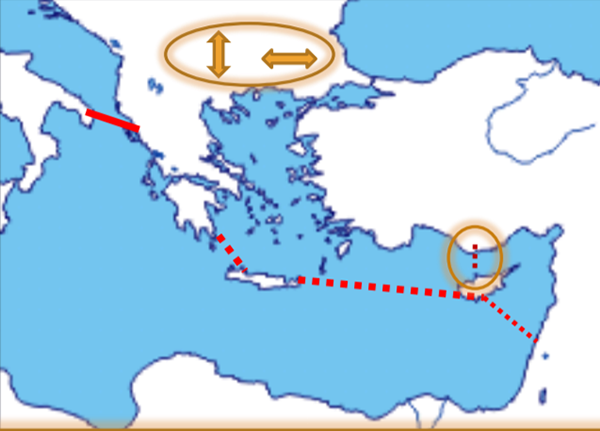
Figure 9: Cross-border connections
Eurasia interconnector
With a length of 1500 km and power 2000MW electric power transfer, Eurasia Interconnector aspires to connect electrical Israeli networks in Greece and Cyprus with mainland Europe, including three (3) individual projects:
- the Cyprus Israel interconnection,
- interconnection of Cyprus with Crete and
- Crete with Attica.
This submersible cable project is accompanied by a number of other major projects, like the construction of new power plants that would be fueled with natural gas, with a view of providing cheap energy to Europe. At the same time, this cable will help to exploit the rich potential of Renewable Energy Systems (RES) in Cyprus and Crete, providing significant economic and environmental benefits. Based on the plans that have been made, implementation for the section between Cyprus and Israel is expected in 2017. The section between Attica and Crete expected to be completed in 2019 and then the section between Crete and Cyprus it is expected to be fully functional by 2022. The technical and environmental studies are concluded by the Italian company CESI. The dipping studies and sea-bed mapping are nearing at the completion stage. As part of these studies it has already reaffirmed that the interconnection is technically feasible and have identified the sites that will host the project infrastructure on land. Finally, concerning funding of the work undertaken, the organization that implements the project is named: “Euroasia Interconnector Limited”. Because of the nature of the Euroasia Interconnector, the project is already included in EU Projects of Common Interest (PCI), therefore no public funds are required at this stage. The Reforms undertaken in Greece during recent years, both on the production and on the transmission of electricity, are attributed to the EU's strategic options known as “Europe 2020 Strategy” and also to the country’s commitments to its creditors . These reforms also affect the cross-border connections. The model of a single European energy market , known under the name “Target Group”, aims inter alia to improve the security and reliability of supply to consumers in EU countries .
Balkan - Regional Security Coordination Initiative (B-RSCI)
In November 2015, within the overall implementation of the EU Regulation 2015/1222 / EU (CACM), a Memorandum of Understanding (MOU) was signed between six Balkan States, concerning the establishment of the Regional Security Coordination Initiative (RSCI) based in Greece. This is in correspondence with the other three already in service within EU Regions. The States’ Authorities that have signed the MoU are Greece (ΑΔΜΗΕ), Albania (OST), Bulgaria (ESO), Kosovo (KOSTT), FYR of Macedonia (MEPSO)and Turkey (TEIAS). The role of the new body RSCI is to provide services to coordinate the operation of the interconnected power system, to collect and analyze data and provide advice in order to ensure the operation of the Transmission System in the Balkan region, but also generally the wider European System. As part of this Balkan cooperation initiative, coordination and measures for the protection of these critical power transmission infrastructure is required.
GR-BL-TU: Concerning cross-border connections, it is expected that in five (5) years from today, a new line from Nea Santa (Greece) to Maritsa (Bulgaria) will be operational, which has been recently identified as a priority project. The new line will increase by 600 megawatts (double) the capacity of the electrical interconnection between the two countries, while it will absorb most of the energy from wind farms operating on both sides of the border. Moreover, it will have a significant positive impact on the safe operation of the interconnections between the European and Turkish transfer systems. Note here that the Turkish power system is now included in the European, and associated with both the Greek and with the Bulgarian to carry out permanently electricity trade among the three countries, with Bulgaria mainly to export electric energy to Greece and Turkey.
GR-TU-CY: For the investment abroad, mainly in Turkey and the Balkans, the Greek Public Electricity Company (ΔΕΗ = dei) uses the trademark: Public Power Corporation (PPC). This corporation already runs offices in Turkey, Bulgaria and further expanding to the Balkans, with collaboration of the Chinese CMEC.
Conclusions
In conclusion, it is evident that the future of EU electricity network, as prescribed, looks very promising. Therefore, the Protection of electric Energy Critical Infrastructure (ECI) will have a lot of room for growth.
Especially in the case of Greece, after the privatization of 49% of the production (now 90% is Public owned) and the 49% of transfer (now 76% is Public owned), the related Security Plans for reconciliation of the P-ECI, will be positively affected, turning from pure Public to private under Public supervision, with more funds available for the security sector.
References
1. Blanas, I. (2016). Electricity Market. Energy Press
2. Changiargiriou, N. “Civilian and the environment at the heart of operational Planning”. Energy Press.
3. EU Directive 2008/114 EC, Article 5 “Operator Security Plans”, ANNEX I: List of ECI Sectors, Official EU Journal. L345/75, 23-12-2008.
4. EU, COM (2013) 673 final, “Five Steps toward a more secure Europe”.
5. Eurasia Interconnector Limited. (2016 )
6. Floudopoulos, Ch. (2016) “A big bet for energy plans, after TAP”. Capital press.
7. Kaetatzidis, M. (2016). Report. Euro2day. URL: http://www.euro2day.gr/
8. Panagiotakis, E. (2016) “National Planning on Energy”. Energy Press.
9. Panagoulis, Th. (2016). “Preface. Energy Press
10. Presidential Degree 39/2011, Greek Government, Governmental Journal 104 A΄/6-5-2011.
11. Public Electric Company (ΔΕΗ)
12. Regulation (EC) 714/2009, “Conditions for access to the network for cross border exchanges in electricity”.
13. Stampsis, G. (2016) “Reforms in the wholesale electricity market”. Energy Press